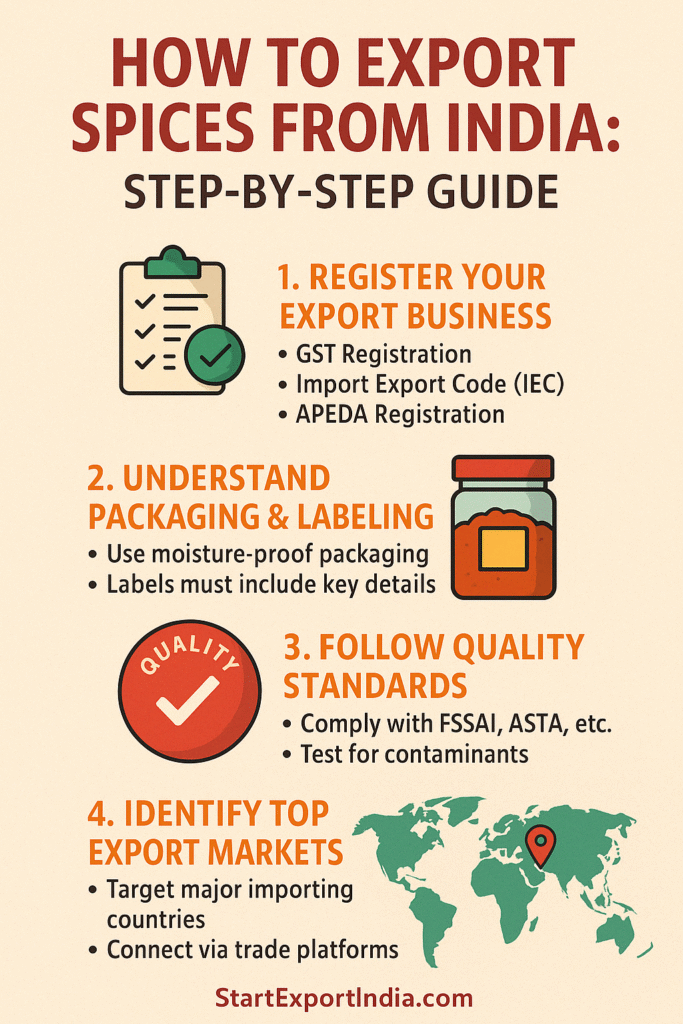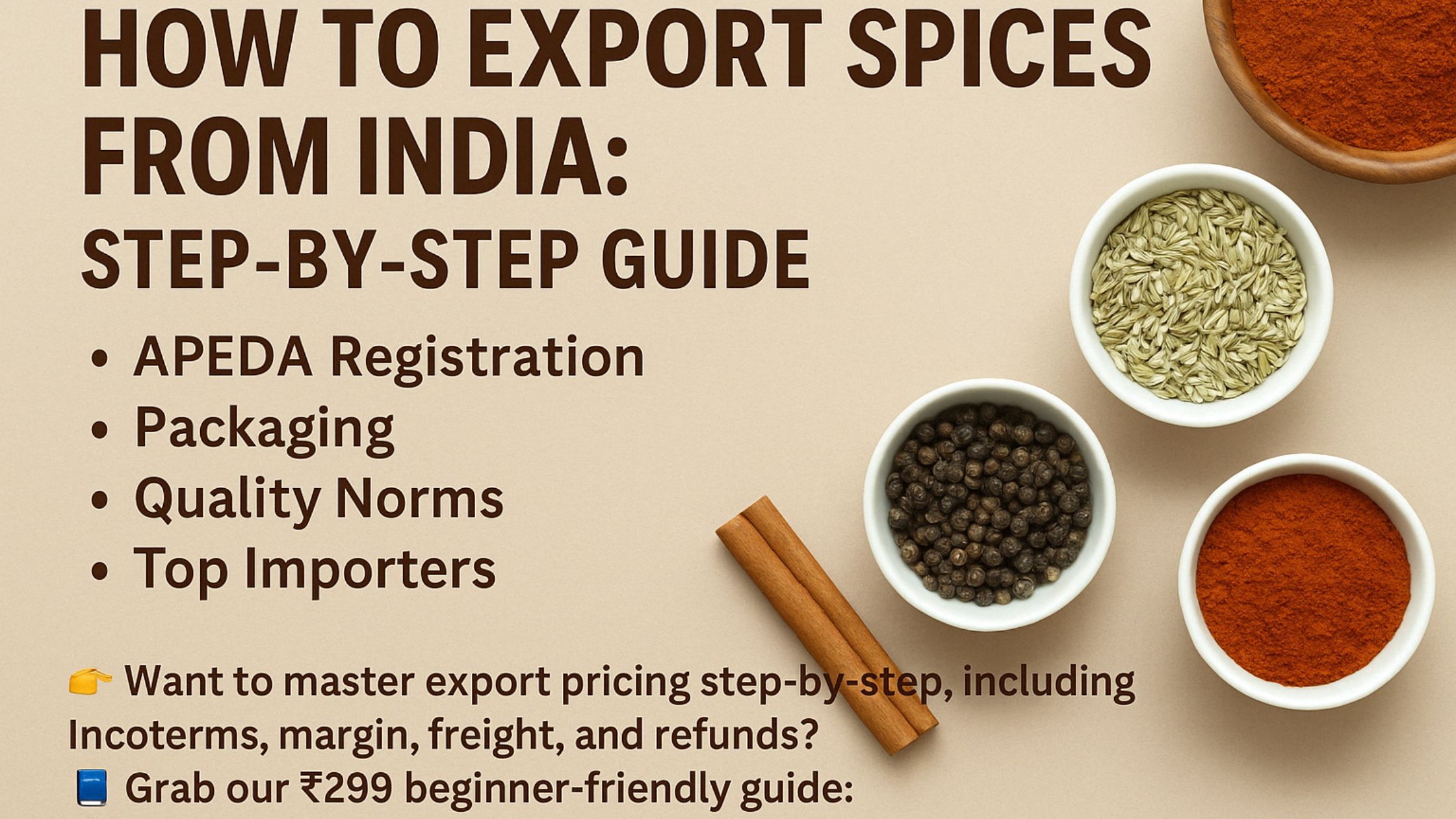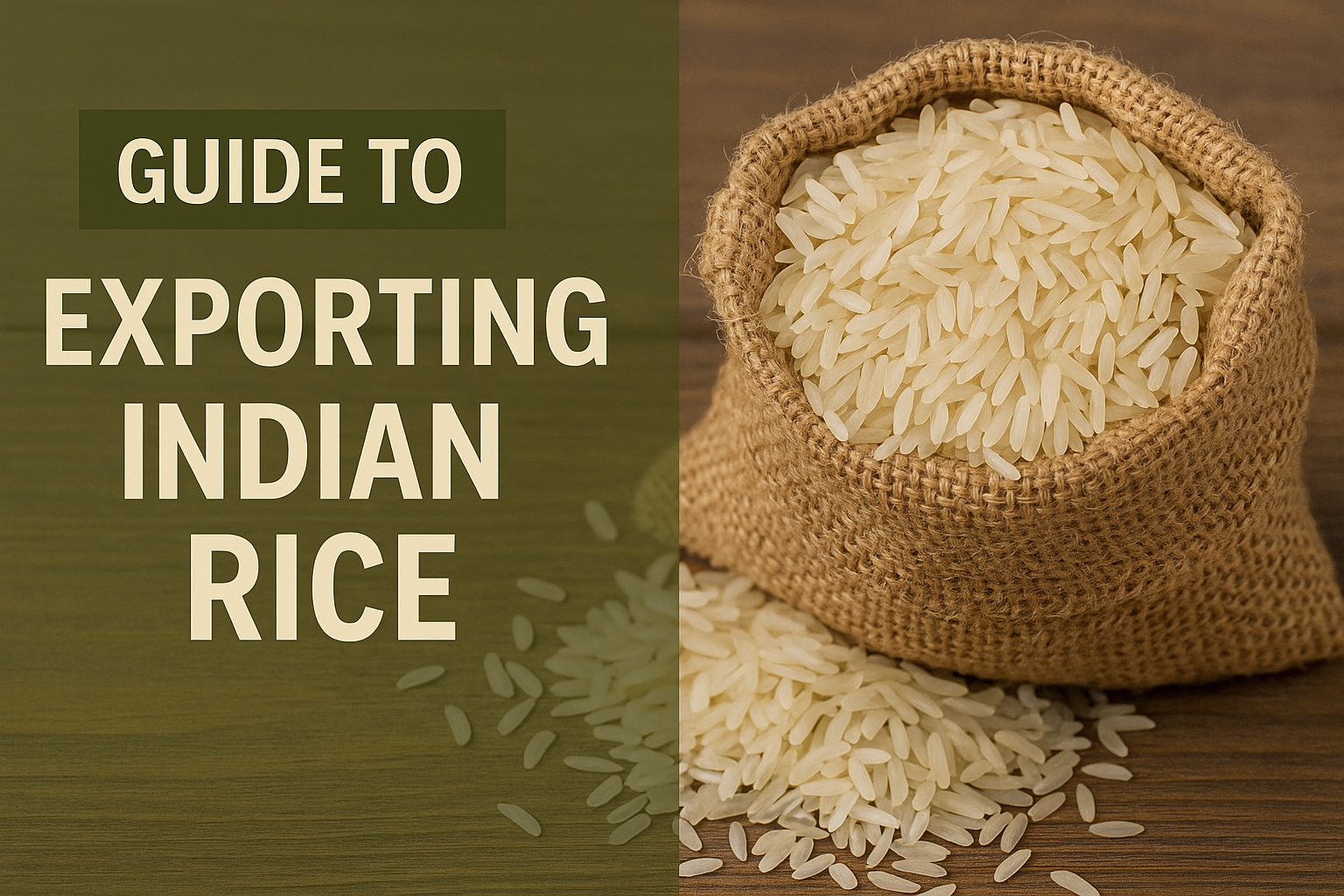How to Export Spices from India: Step-by-Step Guide
India is the largest producer and exporter of spices in the world, contributing over 75% of global spice varieties. From turmeric to cardamom, the world craves the authentic flavor of Indian spices. But how can you turn this demand into an export business?
Here’s your complete step-by-step guide on how to export spices from India.

🔍 Step 1: Register Your Export Business
Before you begin exporting, make sure your business is legally registered. You’ll need:
- GST Registration
- Import Export Code (IEC) – mandatory for export
- APEDA Registration (Agricultural and Processed Food Products Export Development Authority)
👉 APEDA registration is essential for exporting spices and accessing export benefits, training, and financial assistance.
📦 Step 2: Understand Packaging & Labeling Requirements
International buyers and regulatory bodies are very particular about spice packaging. Follow these best practices:
- Use food-grade, moisture-proof packaging (e.g., laminated pouches, PET containers)
- Labels must include:
- Product name & botanical name
- Batch number
- Net weight
- Manufacturer/exporter details
- Expiry or best-before date
- Country of origin
- Certification logos (Organic, USDA, etc., if applicable)
✅ Step 3: Follow Quality Standards
Buyers demand high-quality, contamination-free spices. Ensure your products comply with:
- FSSAI standards (India)
- ASTA, ESA, or FDA standards (USA/EU markets)
- Residue testing for pesticides, aflatoxins, and heavy metals
💡 Tip: Invest in steam sterilization or cold grinding to enhance safety and color retention.
🌎 Step 4: Identify Top Export Markets
Some of the largest importers of Indian spices include:
| Country | Top Imported Spices |
|---|---|
| USA | Turmeric, Cumin, Curry Powder |
| UAE | Chili Powder, Coriander, Mix Masalas |
| Vietnam | Black Pepper, Turmeric |
| UK | Garam Masala, Fennel, Asafoetida |
| Malaysia | Tamarind, Cardamom, Cloves |
➡️ Use platforms like Indiamart, Alibaba, TradeIndia, or connect via APEDA Buyer-Seller Meets.
🚢 Step 5: Logistics and Shipping
Coordinate with a CHA (Customs House Agent) to:
- Prepare export documents (Invoice, Packing List, Certificate of Origin, Phytosanitary Certificate)
- Choose an appropriate shipping method (FCL/LCL)
- Insure your cargo for safety and compliance
📌 Bonus Tips:
- Join Spices Board of India for updates on export policies and quality standards.
- Consider organic spice exports — high-margin and in global demand.
- Attend international food expos for networking and direct leads.
Conclusion
With the right registrations, packaging, and quality, exporting Indian spices can be a profitable and sustainable venture. The key is to stay updated with regulations and build strong relationships with overseas buyers.
🚀 Ready to take your spice business global? Start with the steps above and explore more free resources at 👉 StartExportIndia.com
👉 Want to master export pricing step-by-step, including Incoterms, margin, freight, and refunds?
📘 Grab our ₹299 beginner-friendly guide:
Start Exporting from India in Just 30 Days



